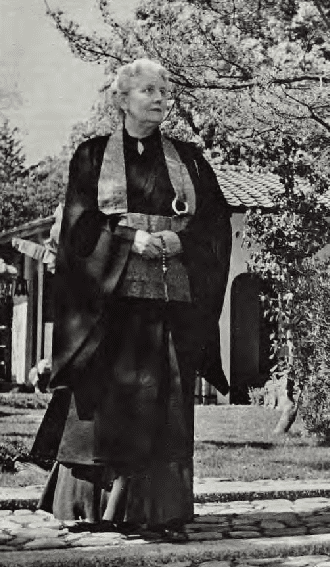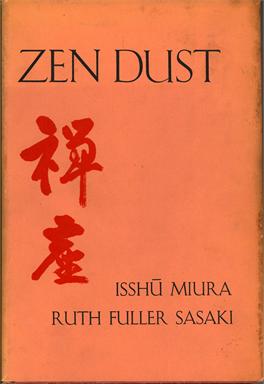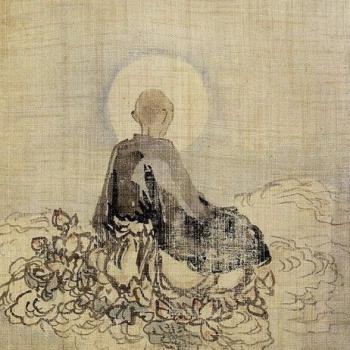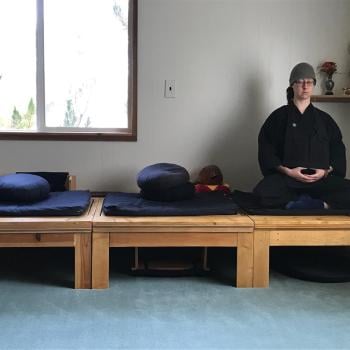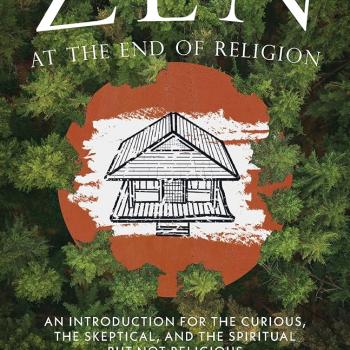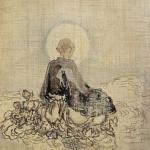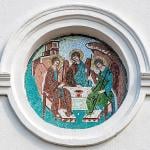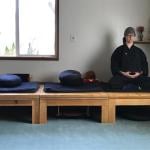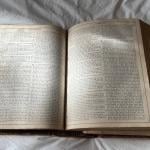I believe we need a “calendar” to mark the cycles of a Zen Buddhist life in the West, something that notes the major holidays adapted to a solar calendar, as well as celebrating notable figures from antiquity and in the establishment of our way.
There have been a couple of attempts. For instance, I like this one. But it feels more a start to the project than the calendar at least I’m looking for.
There are a lot of questions about how to approach this. For people, as an example, I really don’t know if celebrating their birthday, with all that is going to happen ahead of them is best, or on the anniversary of their death, when their contribution has if not completely been sealed, certainly has hit the great inflection point.
Whether on her birth or at her death, the Western Zen pioneer Ruth Fuller Sasaki certainly would be someone to celebrate in such a calendar. And to note, she died in Kyoto on this day, the 23rd of October, in 1967.
Ruth Fuller was born in Chicago on the 31st of October, 1892. Her first marriage made her wealthy, and freed her to pursue wherever her heart took her. As such she took an early interest in matters Eastern. She studied for a time with the early Western convert yogi, Pierre Bernard. She also studied Sanskrit and Indian philosophy at the University of Chicago.
Critically, in 1930 Ruth went to Japan where she met D. T. Suzuki. He gave her basic instructions in Zen meditation as well as a copy of his book Essays in Zen Buddhism (presumably the first series). By her second trip she was sitting regularly at Nanzenji a Rinzai Zen temple.
She was a principal supporter of the Buddhist Society of America, and worked closely with its leader the remarkable lay Rinzai master Sokei-an Shigetsu Sasaki. Among the many interesting footnotes regarding these years, was that she seems to be the person who told the master that Westerners could indeed sit crosslegged on the floor. And, she would be a significant figure in Alan Watts‘ intellectual and spiritual evolution. He would in fact go on to have a brief if disastrous marriage with her daughter.
In 1944, now widowed, Ruth and Sokei-an married. However, he died within a year. In 1945 the Society renamed itself the First Zen Institute of America. At the war’s end, Ruth moved to Japan. There she became a student of Zuigan Goto Roshi, Sokei-an’s dharma sibling.
She would remain in Japan for the rest of her life. Ruth was ordained a priest at Daitokuji, and installed as head of a sub-temple, Ryosenan. It appears she is the first Westerner as well as the first Western woman to be ordained a Rinzai priest and to be installed as head of a sub-temple.
But, in fact her principal work was leading a team of translators that thanks to her financial situation she was able to bring together. Among them were Japanese scholars Iriya Yoshitaka, Kanaseiki Hisao, and Yanagida Seizan. She also recruited the Americans Burton Watson, Philip Yampolsky, and Gary Snyder. As another footnote, she appears to have underwritten Snyder’s first trip to Japan.
The team was productive, producing some critical Zen texts and commentaries in English. My understanding is that she could be a harsh taskmaster. And, there is an ugly account of her wrongly accusing Burton Watson of taking their collaborative work and publishing it on his own. But, on balance the proof of the pudding is the amazing work that came out of those fruitful years.
These included, as listed at Wikipedia, “Zen: A Religion, Zen: A Method for Religious Awakening, Rinzai Zen Study for Foreigners in Japan, The First Zen Institute of America in Japan, Ryosen-an Zendo Practice, and The Wooden Fish: Basic Sutras and Gathas of Rinzai Zen.” In addition to these her translations, the Record of Linji, and the Recorded Sayings of Layman P’ang are considered classics.
Probably her most important work, done with Isshu Miura was Zen Dust: The History of the Koan and Koan Study in Rinzai (Linji) Zen. It was published by the First Zen Institute in 1966 and then in 1967 made available through Harcourt, Brace & world. This was an amazing book.
For many years finding a copy of this critical book for anyone interested in koan study was a major project for the English speaking Zen practitioner. My spouse spent a small fortune trying to find a copy to give to me for a birthday gift. A gift I remain forever grateful for.
However, finally, a second edition is now available. It remains the monumental introduction to Koan Zen for the English speaker. My own small effort to introduce the koan and koan introspection would not have been possible without this pioneering work.
Ruth Fuller Sasaki died from a heart-attack on the 24th of October, 1967.


